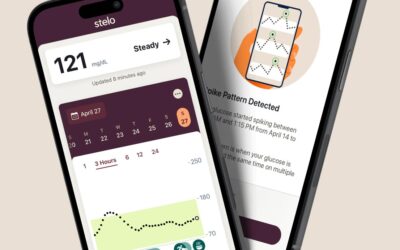You’ve been diligent—taking semaglutide, watching your diet, moving your body—and the weight started to come off. But now, the scale has stalled. Frustrating? Absolutely. Uncommon? Not at all.
Let’s explore why this happens and, more importantly, what you can do about it.
Understanding the Plateau
Semaglutide, known by names like Ozempic or Wegovy, is a GLP-1 receptor agonist that helps regulate appetite and blood sugar. It’s effective, but your body is smart and adapts over time.
Common reasons for hitting a plateau include:
- Metabolic adaptation: As you lose weight, your body burns fewer calories at rest.
- Muscle loss: Losing muscle along with fat can slow your metabolism.
- Appetite return: Over time, hunger cues may resurface.
- Habit shifts: Initial motivation can wane, leading to less mindful choices.
In the STEP 1 trial (NEJM, 2021), participants lost an average of 14.9% of their body weight over 68 weeks on semaglutide, but many experienced plateaus after the initial drop.
Option 1: Maximize Your Semaglutide Dose
Before considering a medication switch, assess your current semaglutide dosage. Are you on the full therapeutic dose?
The maximum recommended dose for weight loss is 2.4 mg weekly. If you’re on a lower dose, discuss with your InstaClinic provider about safely increasing it. Sometimes, this adjustment is enough to reignite progress.
Option 2: Consider Tirzepatide
If you’re on the full semaglutide dose and still not seeing movement, tirzepatide (Mounjaro or Zepbound) might be the next step.
Tirzepatide targets two gut hormone pathways—GLP-1 and GIP—offering a more robust metabolic effect.
In the SURMOUNT-1 trial (NEJM, 2022), participants lost up to 22.5% of their body weight with tirzepatide, surpassing results seen with semaglutide.
Lifestyle Tweaks to Support Progress
Even with medication, lifestyle factors play a crucial role. These strategies not only help break through weight loss plateaus but also contribute to overall health and long-term maintenance:
- Strength Training: Building muscle boosts resting metabolic rate and preserves lean mass during weight loss. Aim for 2–3 sessions per week. Resistance training has been shown to enhance fat loss and improve insulin sensitivity (Willis et al., Obesity, 2012).
- Prioritize Sleep: Quality sleep supports healthy regulation of hunger hormones like ghrelin and leptin. Inadequate sleep increases cravings and appetite, especially for high-calorie foods (Spiegel et al., Annals of Internal Medicine, 2004).
- Protein Intake: Protein helps preserve muscle and promotes satiety. A high-protein diet (25–30% of daily intake) supports fat loss and metabolic health (Leidy et al., American Journal of Clinical Nutrition, 2015).
- Limit Alcohol: Alcohol contains empty calories, disrupts sleep, and impairs judgment around food choices. Reducing intake can support fat loss and improve metabolic markers (Yeomans, Nutrition Research Reviews, 2010).
- Hydration: Dehydration can mimic hunger, leading to unnecessary snacking. Drinking water before meals can reduce overall intake (Dennis et al., Obesity, 2010).
- Fiber-Rich Foods: Fiber improves satiety, supports digestion, and helps regulate blood sugar. Aim for 25–35 grams daily from vegetables, fruits, legumes, and whole grains (Slavin, Nutrition, 2005).
- Intermittent Fasting (IF): IF can help improve insulin sensitivity and reduce overall calorie intake. A 16:8 time-restricted eating window is a popular approach. Studies have shown improved weight loss and metabolic markers with IF (Sutton et al., Cell Metabolism, 2019).
- Stress Management: Chronic stress elevates cortisol, which can promote abdominal fat storage and interfere with weight loss. Mindful practices such as yoga, breathing exercises, and nature walks have been shown to reduce cortisol levels (Stults-Kolehmainen & Sinha, Frontiers in Psychology, 2014).
- Hormonal Support for Perimenopause: For women in their 40s and beyond, hormonal changes can impact weight. Estrogen therapy has been associated with improved insulin sensitivity, reduced central fat distribution, and enhanced quality of life (Santen et al., Menopause, 2020).
Celebrate Non-Scale Victories
Remember, progress isn’t solely measured by the scale. Notice how your clothes fit, your energy levels, and your overall well-being. These are significant indicators of success.
Need Guidance?
Your journey is unique, and we’re here to support you every step of the way. Schedule a visit with your InstaClinic provider to tailor a plan that fits your needs.
Sources:
- Wilding, J.P.H., et al. (2021). NEJM. “Once-Weekly Semaglutide in Adults with Overweight or Obesity.”
- Jastreboff, A.M., et al. (2022). NEJM. “Tirzepatide Once Weekly for the Treatment of Obesity.”
- Sutton, E.F., et al. (2019). Cell Metabolism. “Early Time-Restricted Feeding Improves Insulin Sensitivity.”
- Spiegel, K., et al. (2004). Annals of Internal Medicine. “Brief Communication: Sleep Curtailment in Healthy Young Men Is Associated with
- Decreased Leptin Levels, Elevated Ghrelin Levels, and Increased Hunger and Appetite.”
- Leidy, H.J., et al. (2015). AJCN. “The role of protein in weight loss and maintenance.”
- Slavin, J. (2005). Nutrition. “Dietary fiber and body weight.”
- Dennis, E.A., et al. (2010). Obesity. “Water consumption increases weight loss during a hypocaloric diet intervention.”
- Yeomans, M.R. (2010). Nutrition Research Reviews. “Alcohol, appetite and energy balance: is alcohol intake a risk factor for obesity?”
- Willis, L.H., et al. (2012). Obesity. “Effects of aerobic and/or resistance training on body mass and fat mass in overweight or obese adults.”
- Santen, R.J., et al. (2020). Menopause. “Effects of hormone therapy on body composition.”
- Stults-Kolehmainen, M.A., & Sinha, R. (2014). Frontiers in Psychology. “The effects of stress on physical activity and exercise.”
Start Your Journey Here
If you’re a first time patient, begin the process of starting your InstaClinic® experience OR schedule an appointment if you’re already an established patient or would like a complimentary consultation, click the button below.




